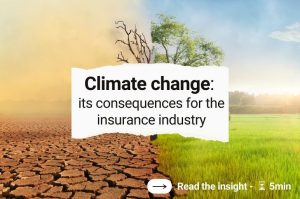
Climate Change and Insurance: Navigating the Era of Environmental Uncertainty
Climate change has transitioned from a distant concern to an immediate reality, profoundly impacting our environment, economy, and society. With rising temperatures, erratic weather patterns, and increased frequency and intensity of natural disasters, the insurance industry faces unprecedented challenges in assessing and managing climate-related risks. From extreme weather events and rising sea levels to wildfires and flooding, insurers must adapt to this new normal of climate change and develop innovative strategies to protect policyholders and promote resilience. This in-depth analysis explores the intersection of climate change and insurance, the evolving landscape of climate-related risks, and the imperative for adaptation and mitigation efforts.
Understanding Climate-Related Risks:
Climate-related risks encompass a broad spectrum of hazards and phenomena linked to changes in temperature, precipitation, and weather patterns resulting from human-induced climate change. Key climate-related risks facing insurers include:
1. Extreme Weather Events:
The increase in extreme weather events, such as hurricanes, heatwaves, droughts, and severe storms, driven by rising temperatures and changing weather patterns, can lead to widespread property damage, infrastructure disruptions, and economic losses. Insurers face challenges in managing insurance claims and liabilities arising from these events.
2. Flooding and Sea Level Rise:
Coastal regions and low-lying areas are particularly vulnerable to flooding and sea-level rise, exacerbated by urbanization and coastal development. Insurers must develop innovative approaches to assess risks and provide coverage for flood-related losses, including damage to homes, businesses, and critical infrastructure.
3. Wildfires:
Climate change has intensified wildfires, posing significant risks to communities, ecosystems, and property. Insurers grapple with the growing threat of wildfire-related losses, including property damage, business interruption, and liability claims arising from fire-related injuries or damages.
4. Climate Liability Litigation:
As the impacts of climate change become more evident, there is a rise in climate liability litigation targeting entities deemed responsible for contributing to climate change, such as fossil fuel companies and governments. Insurers may face legal and financial risks associated with climate-related lawsuits, including coverage disputes and reputational damage.
Adapting to Climate Change:
Adapting to climate change requires a proactive and multifaceted approach that integrates risk assessment, mitigation measures, and resilience-building strategies. Insurers can lead the way in promoting climate resilience and facilitating the transition to a low-carbon economy through the following strategies:
1. Climate Risk Assessment:
Enhancing capabilities for assessing and quantifying climate-related risks using advanced modeling techniques, scenario analysis, and geospatial mapping tools. By incorporating climate data and projections into risk assessment processes, insurers can make informed underwriting decisions and understand the exposure of their portfolios to climate risks.
2. Product Innovation:
Developing innovative insurance products and coverage options tailored to address emerging climate risks. This may include parametric insurance products triggered by predefined weather thresholds, index-based insurance for agricultural losses, and resilience bonds to finance climate adaptation projects.
3. Risk Reduction and Mitigation:
Incentivizing policyholders to adopt risk reduction measures and invest in resilience-building initiatives. This could involve offering premium discounts for homeowners implementing flood-proofing measures or wildfire-resistant landscaping.
4. Sustainable Investment Practices:
Aligning investment portfolios with sustainability goals and climate resilience objectives by integrating environmental, social, and governance (ESG) criteria into decision-making processes. Insurers can divest from fossil fuels and support renewable energy and green infrastructure projects.
5. Stakeholder Engagement and Collaboration:
Engaging with policymakers, regulators, industry stakeholders, and community organizations to advocate for climate action and support resilience efforts. Collaborative initiatives, such as public-private partnerships and industry working groups, can facilitate collective action and enhance resilience across sectors.
The insurance industry faces unprecedented challenges from climate change, necessitating adaptations in business models, risk management practices, and product offerings. By embracing climate resilience and integrating climate risk considerations into decision-making processes, insurers can lead in addressing climate change impacts and promoting sustainable development. Collaboration, innovation, and collective action are essential as we confront the existential threat of climate change and work towards a more resilient and sustainable future for generations to come.